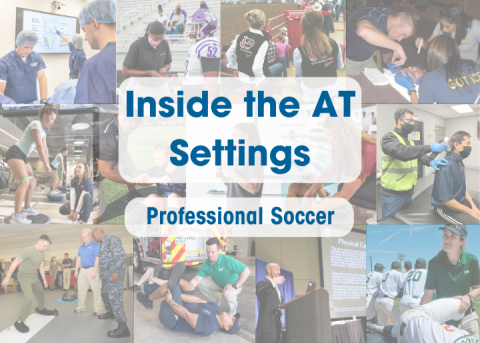
Introduced in the April NATA News, this NATA Now article series provides insight into the different athletic training settings as well as information athletic training students and interested ATs need to know. The series also provides tips from members on how to succeed in each setting.
Kurt Andrews, MAT, LAT, ATC, director of sport medicine for Major League Soccer for Sporting Kansas City, said he always knew he wanted to work in professional soccer.
“I grew up playing [soccer] and it was the only sport I wanted to work with after graduating from the University of Arkansas’ athletic training program,” Andrews said. “I was very lucky along the way due to the increase of popularity at the time and opportunities available.”
His 13-year career, seven with Sporting KC, kicked off with an internship with the Los Angeles Galaxy.
“That internship opened a lot of doors for me and benefitted me immensely when I was done with grad school,” he said.
Read on for more insight into the professional soccer setting from Andrews.
Typical Makeup of Your Population
The professional soccer community is incredibly diverse, with players who have cultures from all over the world playing in the league.
Non-AT-Related Skills/Education/Certification Required or Helpful for Your Setting
Some of the key skills are the ability to communicate, understanding of the game or sport that I work in, having a knowledge base of the other professions that I work with (i.e., coaches, performance staff, etc.), being a team player and a broad knowledge of computer skills (especially Excel).
Common Injuries Observed or Encountered in Your Setting
I see a lot of soft tissue strains (hamstring, quad, adductor, calf), knee injuries (chondral lesions, sprains) and hip injuries (FAI).
Traits of a Successful AT in Your Setting
Professionally hungry, always willing to learn, love to teach, empathetic, strong communicator, not afraid to be vulnerable, confident and team player
Misconceptions About Your Setting and/or Patient Population
A lot of people think athletes are just athletes, but there is so much more to them as human beings.





